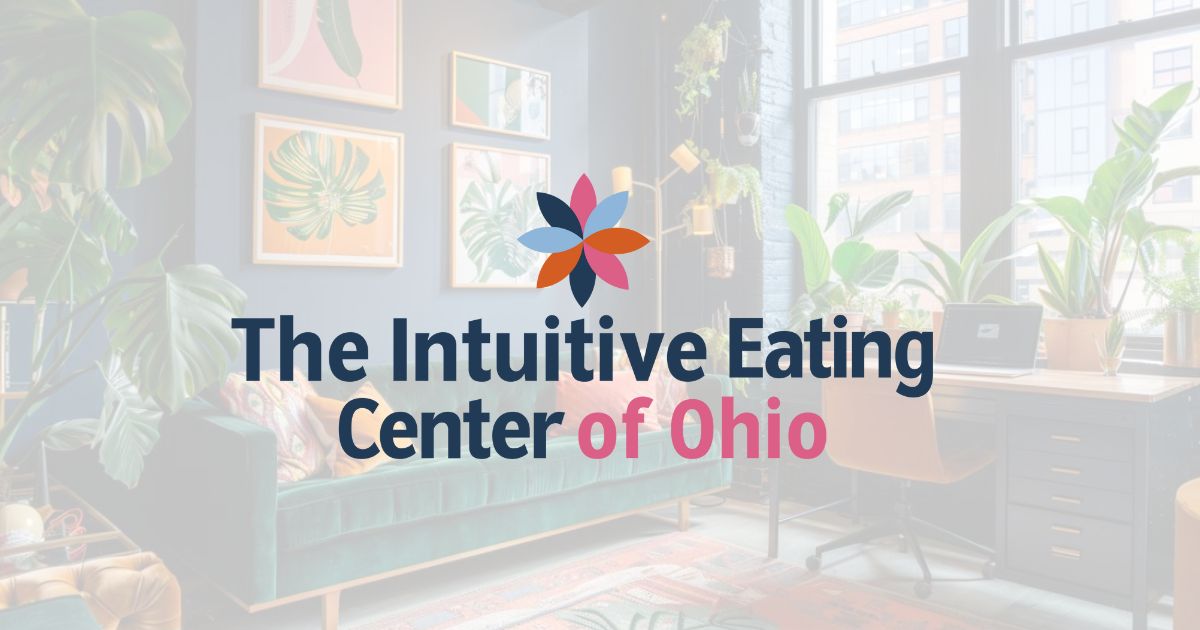
“I wasn’t hungry so I didn’t eat.”
“But why would I eat if I wasn’t hungry?”
“Am I going to gain weight if I eat when I’m not hungry?” (Side note: why are we still pathologizing weight gain, anyway? Besides because our society is still soul-crushingly fatphobic and anti-fat. More on that another time.)
I love these questions. Some days they can feel exhausting, like when your kid has asked you “why” for the 1 millionth time in the last hour or when you have to brush your teeth…again. But most days, I approach them with a smile because for once, I have the answer.
Diet culture tells us we only have permission to eat when we feel hungry and if we eat at any other time, we are gluttonous, impulsive, lacking willpower. Of course, this is an impossible feat because we are not robots. We all have unique socio-cultural and -economic demands, life experiences, physiological and psychological needs, values, genetics, etc. that influence when, why, how, and how much we eat. Often times I ask folks, “how do you know when to eat?” or “how do you know when you’re finished eating?” While I do get a variety of responses, it’s not uncommon for people to just shrug. They probably can also sense my eagerness to information dump on them so they just politely wait for my tangent instead of delaying the inevitable.
Physical, or “primal,” hunger is only one type of hunger among 4 that Elyse Resch, MS, RDN, CEDS-S, Fiaedp, FADA, FAND and Evelyn Tribole, MS, RDN describe in their book, Intuitive Eating: A Revolutionary Anti-Diet Approach. This is the one that folks often feel is the green light for eating, which by the way, don’t even get me started on red light, yellow light, green light systems and food. But remember, we’re not robots. We’re dynamic and hunger is much more nuanced than just a single physical “feeling.”
Resch and Tribole also describe “practical” hunger. Maybe you’re a nurse or a teacher and you’re not able to access food whenever you please. You had breakfast around 7 or 8a but the only break you’ll have to eat lunch is around 10am. So, that’s when you’ll need to eat lunch otherwise, you’ll be waiting until school gets out or for your patients to settle in after lunch around 3p. You may not feel physically hungry at 10a but from a practical perspective, it won’t benefit you to wait to eat.
The last two types of hunger are the 2 folks seem to struggle with the most: taste and emotional hunger, both of which are equally as important as physical and practical hunger! At Christmas time, it’s a tradition that we make sugar cookie cutouts and decorate them—we even have a competition for best and worst cookies. I made a Lieutenant Dan cookie a few years back, bloody stump and all, and got WORST cookie. I’m still mad about it. Around day 4 or 5 after making the cookies, they soften up from the moisture in the icing and they’re JUST. PERFECT. Usually, I’ll have bites of the cookies during the day and in the evening, I’ll eat 2 or 3 of them. Am I hungry for cookies all day and for 3 of them at night? No. But are they buttery and sweet and only around for a few weeks of the year? YES! So, I have a blissful, whirlwind relationship with the sugar cookies for the month of December and savor every sprinkle knowing I probably won’t have them again until the next year. Side note: I’m unlikely to have them again not because I can’t have them or I avoid them; we’re just highly unlikely to buy several tubes of cookie dough, make half a dozen different colors of icing, and get the whole family together for an entire day of cookie making more than once a year. Eating something just because it tastes so damn good is a perfectly acceptable reason.
And that leaves emotional hunger. Poor emotional hunger is pathologized, demonized, and vilified. Would you believe me if I told you, it’s normal? Emotional hunger IS normal and also perfectly ok. Emotional hunger becomes problematic when we’re using it as a means of avoidance or numbing. Like that glass of wine after a never-ending day or a guided meditation when your kids are plucking your final nerve like it’s the last banjo string left on planet Earth…emotional eating can be an effective coping tool.
I know eating to satisfy taste and/or emotional hunger can sound scary. However, when we practice building awareness (aka mindfulness) and trust in our bodies, we’re able to notice when we’re experiencing flavor fatigue or when food just isn’t soothing us the way we’d hoped. So, you see, the process of eating is not methodical. But because diet culture is rooted in this false belief system, we inevitably fail at a game that was never meant to be won thereby constructing high, thick walls of shame and guilt. Hear me when I say: Food is not just a means of fuel. It is an integral part of community, culture, pleasure, connection, spirituality, and individuality.
Physical hunger: Think hunger pangs. This occurs when your body gives you physical indicators that it’s ready for nourishment. These could vary among preoccupation with food, gnawing in your throat or stomach, or maybe even a headache if you’ve waited far too long. Get to know your body—your hunger cues are unique to you.
Practical hunger: Timing matters. You may not feel hungry at a particular time but if logistically it makes sense to eat, then eat!
Taste hunger: When we want another bite because, dang, that is SO good! Practice checking in with your fullness cues and your interest in the food and if it’s true in your unique circumstance, give yourself permission to have that food again tomorrow…or in an hour if you wish! In some instances, having the food again may not logistically be possible and maybe that plays into your decision to stop or continue eating.
Emotional hunger: Self soothing is essential to emotional well-being and food can be a means of that. As with any coping tool, it can become maladaptive if we’re using it to mask, avoid or numb.
If you’re finding this practice to be challenging or you feel stuck. Let us help you along your journey.

We are a private practice in Ohio offering in person and virtual nutrition and psychotherapy services for Intuitive Eating and eating disorders.


216-395-4118
24500 Center Ridge Road
Westlake OH
serving all of Ohio virtually
Virtual and in person nutrition & psychotherapy services in Ohio for intuitive eating & eating disorders.
You are welcome here regardless of age, race, ability, size and gender identity.
